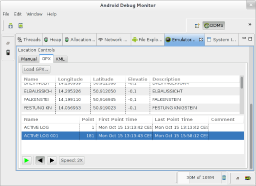Chinyero is the name of a volcano in the National Park of Tenerife. Its last eruption was in November 1909, which was also the last eruption of a volcano on Tenerife.
The starting point is a tiny parking spot at the TF-38 that leads from the town Chío to the Teide national park. From there, we just follow the Circular Chinyero route, which is also marked with white and yellow posts. Our hike trip starts in a pine forest, then goes across a plain of volcanic rock, and then returns through a mix of pine forests and volcanic land.
Usually this place is located above the clouds. This time the clouds were rather high, and covered the landscape in a thick fog. It was very spectacular. At the plain of volcanic rock, it felt like we were walking on a foreign planet.
The tour is about 6.5 km long and easy to walk.
Continue reading...